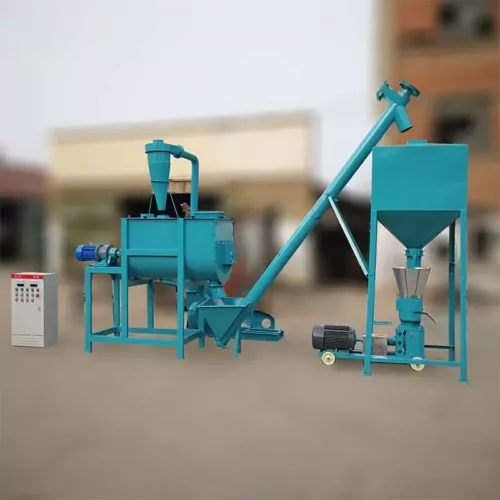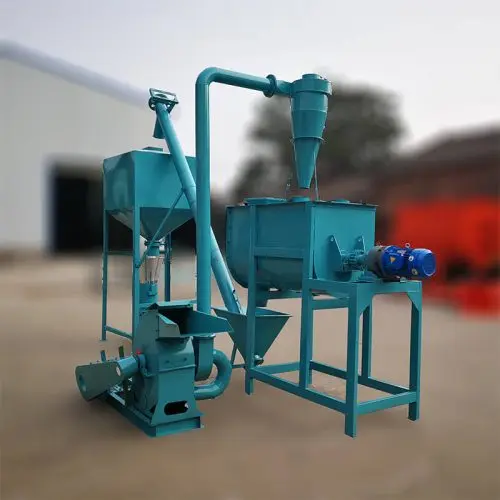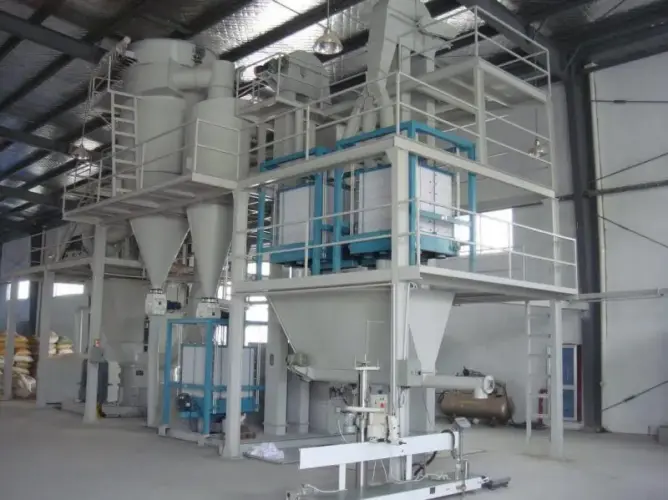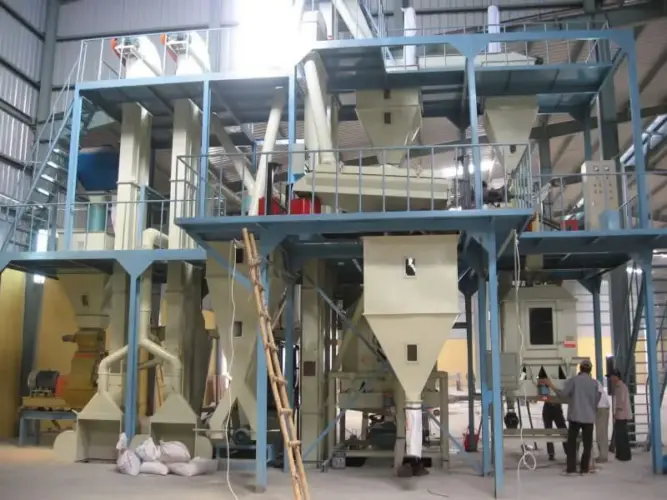Introduction of Poultry Feed in Nigeria
For anyone in the poultry business in Nigeria, from small farmers to large commercial operations, one challenge stands above all: the high and unpredictable cost of quality chicken feed. It’s the single biggest expense that determines your profitability. Setting up your own poultry feed mill is a powerful step towards taking control. It’s not just about making feed; it’s about building a more resilient and profitable business from the ground up.
This in-depth guide is a practical roadmap for entrepreneurs in Nigeria. We’ll cover the real benefits, the essential machinery, the step-by-step production process, and the critical questions you must answer before you invest a single Naira.


The Real Advantages: Why Set Up a Feed Mill in Nigeria?
Having your own feed mill offers powerful advantages in the Nigerian market.
Take Full Control of Your Biggest Cost.
This is a major benefit. You can purchase your poultry feed ingredients, like maize, soya, groundnut cake (GNC), and palm kernel cake (PKC), in bulk. This avoids the markups and price volatility of commercial feeds.
Guarantee Your Feed Quality and Consistency.
“You know exactly what’s in your feed. This is crucial in a market where the quality of commercial feed can sometimes be inconsistent. It means healthier birds, better growth rates, and more predictable results for your business.”
A Reliable Feed Supply, Free from Market Scarcity.
“No more worrying about your supplier running out of stock or sudden price hikes during critical periods. You control your own supply chain, which is a huge advantage.”
Create a New, Profitable Business Venture.
Besides making feed for your own farm, a feed mill is a major business opportunity. You can sell your high-quality, freshly made feed to the thousands of other poultry farmers in your state and beyond.
Inside the Mill Plant: A Tour of the Essential Machinery
A modern poultry feed mill plant has several key sections with specialized machines.
The Grinding Section (Hammer Mill):
This poultry feed grinder machine job is to grind raw ingredients into a uniform, fine particle size. This is crucial for poultry. They need finely ground feed for good digestion, especially when they are young.
The Mixing Section (Mixer):
After grinding, all poultry feed ingredients are blended perfectly in a large mixer. This is a critical step to ensure that important micro-ingredients, like vitamins and minerals, are evenly distributed.
The Conditioning Section (Steam Conditioner):
This is a key step for making high-quality poultry feed. The conditioner uses steam to add heat and moisture to the feed mash. This process helps to cook the starches, which makes the feed easier for chickens to digest. It also helps to kill harmful bacteria.
The Pelleting Section (Pellet Mill):
The poultry feed pellet mill is the heart of the system. It takes the conditioned mash and uses high pressure from rollers to press it through a die (a metal plate with holes), forming dense pellets.
The Cooling & Screening Section:
Cooling is essential to prevent mold and to create a hard, durable pellet. After the pellets come out of the mill hot, a cooler brings them down to a safe temperature. A screener then removes any fine dust.
The Crumbler (A Non-Negotiable Machine for a Full-Line Poultry Mill):
“This machine is absolutely essential if you plan to produce starter feed for day-old chicks. Whole pellets are often too large for young birds to eat. A crumbler takes the finished pellets and gently breaks them into the perfect ‘crumble’ size that young birds can eat.”
The Bagging & Storage Section:
This includes automated or semi-automated systems for weighing the finished feed and packing it into bags for storage or sale.


The Production Process: From Raw Maize to Bagged Feed
Here is a general look at the process of manufacturing poultry feed in a modern feed mill plant:
- Receiving & Quality Control of Raw Materials.
- Grinding the ingredients to the correct fine particle size.
- Batching & Precise Mixing of the formula.
- Steam Conditioning to prepare the mash.
- Pelleting to form the dense pellets.
- Cooling and Hardening the pellets.
- Crumbling (if making starter feed).
- Screening to remove fines and ensure uniform quality.
- Weighing & Bagging the finished product.
A Strategic Checklist for Starting Your Feed Mill in Nigeria
Setting up a feed mill is a major project. Careful planning is the key to success.
1. The Make-or-Break Factor: Your Raw Material Supply Chain.
“Can you get a consistent, reliable, and affordable supply of high-quality maize, soy, and GNC all year round? If the answer is not a strong ‘yes’, you need to solve this problem first.”
2. Know Your Market & Required Capacity (Tons/Hour).
Are you supplying broiler farms, layer farms, or both? How much feed will your target customers need?
3. Plan Your Facility & Power Supply.
“Power is a major consideration in Nigeria. Will you rely on the grid, or do you need to budget for a large, dedicated generator to ensure you can run your mill without interruption? This is a critical cost factor.”
4. Choose Your Machinery Supplier Wisely.
You can choose between imported or locally fabricated machines in Nigeria. Look for suppliers with a strong reputation and good after-sales support.
5. Understand the Regulations (NAFDAC & SON).
If you plan to sell feed commercially, it is important to understand the standards and registration requirements from bodies like the National Agency for Food and Drug Administration and Control (NAFDAC) and the Standards Organisation of Nigeria (SON).
Insider Tips & Common Mistakes to Avoid
- Tip: “A Good Mixer is More Important Than a Fast Pellet Mill.” “Many beginners focus only on the pellet mill’s capacity. But a perfectly mixed ration is the true secret to good feed. An uneven mix means uneven bird growth. Invest in a high-quality mixer.”
- Mistake to Avoid: “Skimping on the Cooler.” “Hot pellets put into a bag will sweat, and that moisture will lead to mold. Moldy feed is toxic and can wipe out a flock. A proper cooling system is not optional; it is essential for producing safe, storable feed.”
- Tip: “Start by Selling to Your Local Community.” “Don’t try to compete with the giant feed companies on day one. Start by building a reputation for quality and consistency with the poultry farmers in your local area. Their trust is your most valuable asset.”
Conclusion
Setting up a poultry feed mill in Nigeria is a significant business venture. It offers immense potential for profitability and control over the poultry value chain. Success requires meticulous planning, a solid understanding of both the machinery and the market, and a commitment to producing a high-quality, consistent product.
FAQ About Poultry Feed Mill in Nigeria
What is the most important machine in a Nigerian poultry feed mill?
A: While every machine is important, a high-quality mixer is critical for ensuring a balanced ration. For a full-service mill, a crumbler is also essential, as producing starter feed for day-old chicks is a huge part of the Nigerian poultry market.
How much does it cost to set up a small poultry feed mill in Nigeria?
A: This is a major investment. A small but complete production line (e.g., 1-2 tons per hour) can cost from several million to tens of millions of Naira, depending on the quality of the machinery (imported vs. local) and the level of automation.
Do I need a generator for my feed mill in Nigeria?
A: For any serious commercial operation, yes, a dedicated diesel generator is highly recommended. Relying solely on the public power grid (NEPA/PHCN) is very risky and can lead to costly production shutdowns.
Can I get a loan to start a feed mill in Nigeria?
A: Yes, financing is available. You can look into SME or agricultural loans from commercial banks. It is also highly recommended to check for programs from the Bank of Agriculture (BOA) and any current interventions or support schemes from the Central Bank of Nigeria (CBN) that are aimed at boosting local agriculture.
Is it better to buy a locally fabricated or an imported machine in Nigeria?
A: This depends on your budget and goals. Imported machines often offer higher precision and durability but are more expensive and can be harder to get parts for. Locally fabricated machines are cheaper and easier to repair, but you must carefully inspect the quality of the workmanship and materials before buying.
